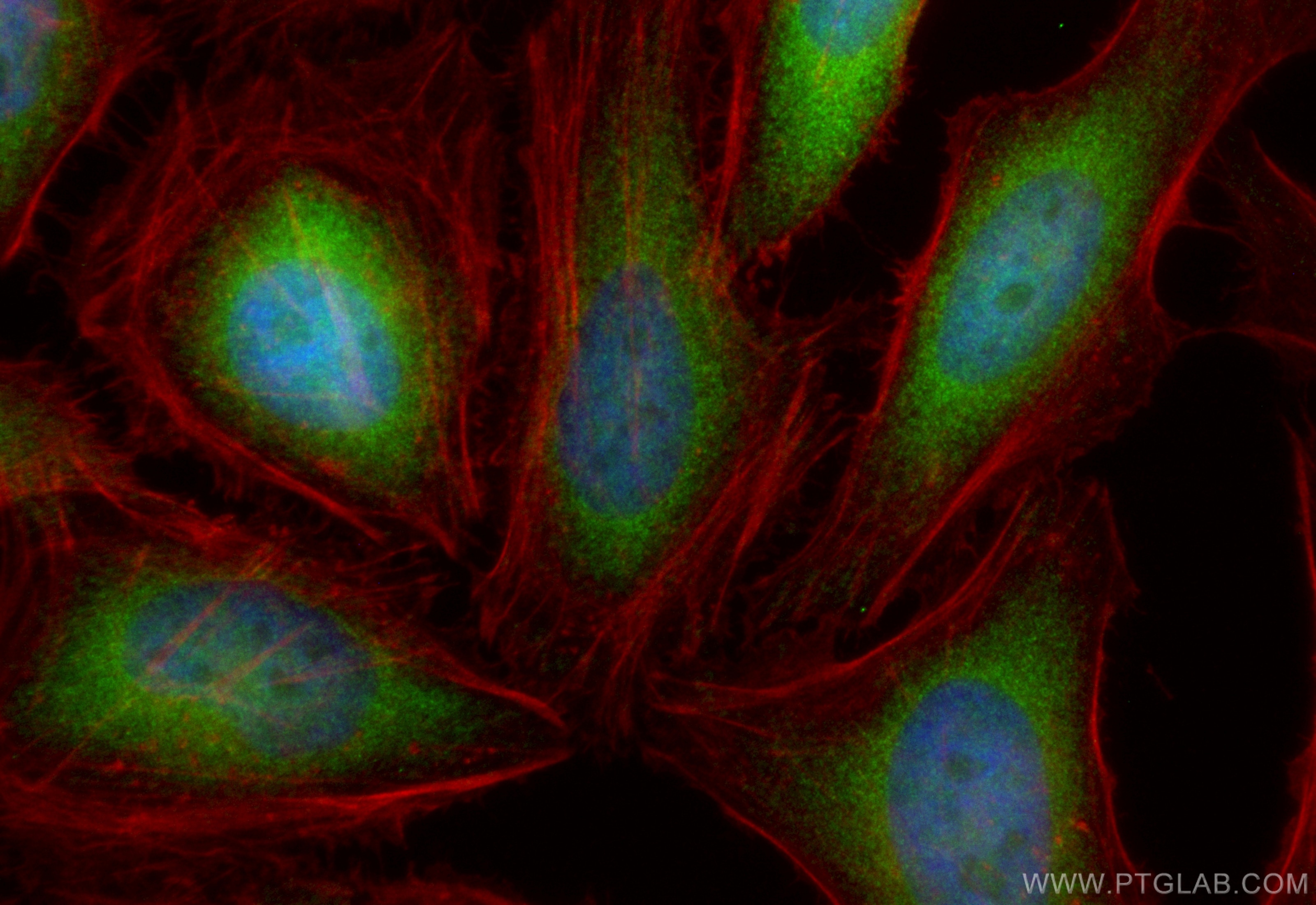Tested Applications
| Positive IF/ICC detected in | HeLa cells |
Recommended dilution
| Application | Dilution |
|---|---|
| Immunofluorescence (IF)/ICC | IF/ICC : 1:50-1:500 |
| It is recommended that this reagent should be titrated in each testing system to obtain optimal results. | |
| Sample-dependent, Check data in validation data gallery. | |
Product Information
CL488-84619-5 targets FADD in IF/ICC applications and shows reactivity with human samples.
| Tested Reactivity | human |
| Host / Isotype | Rabbit / IgG |
| Class | Recombinant |
| Type | Antibody |
| Immunogen |
CatNo: Ag6701 Product name: Recombinant human FADD protein Source: e coli.-derived, PGEX-4T Tag: GST Domain: 1-208 aa of BC000334 Sequence: MDPFLVLLHSVSSSLSSSELTELKFLCLGRVGKRKLERVQSGLDLFSMLLEQNDLEPGHTELLRELLASLRRHDLLRRVDDFEAGAAAGAAPGEEDLCAAFNVICDNVGKDWRRLARQLKVSDTKIDSIEDRYPRNLTERVRESLRIWKNTEKENATVAHLVGALRSCQMNLVADLVQEVQQARDLQNRSGAMSPMSWNSDASTSEAS Predict reactive species |
| Full Name | Fas (TNFRSF6)-associated via death domain |
| Calculated Molecular Weight | 23 kDa |
| Observed Molecular Weight | 29 kDa |
| GenBank Accession Number | BC000334 |
| Gene Symbol | FADD |
| Gene ID (NCBI) | 8772 |
| Conjugate | CoraLite® Plus 488 Fluorescent Dye |
| Excitation/Emission Maxima Wavelengths | 493 nm / 522 nm |
| Form | Liquid |
| Purification Method | Protein A purification |
| UNIPROT ID | Q13158 |
| Storage Buffer | PBS with 50% glycerol, 0.05% Proclin300, 0.5% BSA, pH 7.3. |
| Storage Conditions | Store at -20°C. Avoid exposure to light. Stable for one year after shipment. Aliquoting is unnecessary for -20oC storage. |
Background Information
Fas-Associated protein with Death Domain (FADD), also called MORT1 or GIG3, is encoded by the FADD gene. FADD is an adaptor protein that bridges members of the tumor necrosis factor receptor superfamily, such as the Fas-receptor, to procaspases 8 and 10 to form the death-inducing signaling complex (DISC) during apoptosis. As well as its most well known role in apoptosis, FADD has also been seen to play a role in other processes including proliferation, cell cycle regulation and development. FADD has a calculated molecular mass of 23 kDa and always can be detected as 23-30 kDa (PMID: 15390286, 22864571, 17977957)
Protocols
| Product Specific Protocols | |
|---|---|
| IF protocol for CL Plus 488 FADD antibody CL488-84619-5 | Download protocol |
| Standard Protocols | |
|---|---|
| Click here to view our Standard Protocols |




